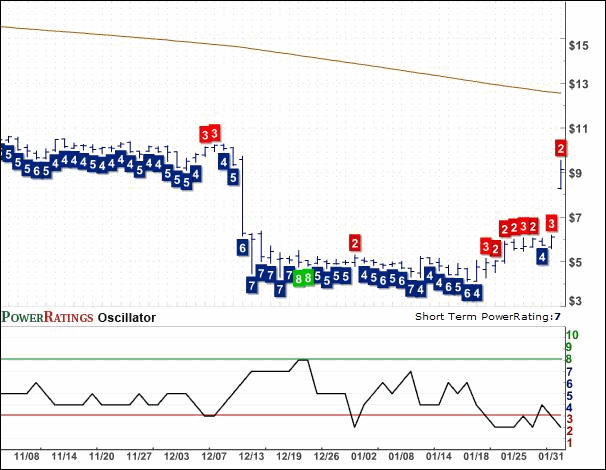Mind the Gap: Five Overbought Stocks for Traders
There may be few things more exciting when it comes to short-term individual stock behavior than the gap up. Whether it occurs in stock that has been falling or rallying, gaps that see a stock open significantly higher than when it last closed always bring investor attention.
Such gaps represent, at their most basic level, an intense buying interest toward that stock. And while investors do not always know what is causing the gap
— from an earnings surprise to a short squeeze to a reaction to a certain news event (real or perceived)
— most traders find it difficult to withstand the temptation to rush in and join the “gap up” party as the stock surges higher.
Our research into the behavior of gaps, especially big gaps of 10% or more, reveals to us that trades would do well to not yield to temptation when it comes to chasing gaps. We looked at millions of short-term trades to answer the question: how do stocks tend to perform, on average, after major gap ups? Do they tend to follow-through to the upside, moving powerfully in the direction of the gap? Or do they tend to fail, reversing shortly after the gap, sending those who tried to climb on board late scurrying for the exits?
We found that the latter occurs far more often than most short-term traders might believe. Specifically, our research showed that the average returns of stocks that gapped up were actually negative in one-day, two-day and one-week time frames. This means that for short-term traders, there is no edge in buying stocks after they have gapped higher.
Further, when the gap was 10% or more, we found that stocks averaged a one-week return of negative 1.14%.
Click here
to read our research into stock’s that gap up.
Rather than buying gap ups, our research showed that there edge was in buying gaps down. For those familiar with the TradingMarkets Path to Professional Trading (click here
to register for our free trading course), this is little surprise, insofar as our trading techniques are geared toward buying weakness and selling strength, buying low and selling high.
At the same time, we don’t encourage traders to short just any stock that has gapped up 10%. Instead we suggest focusing on weak stocks, those stocks that are trading below their 200-day moving averages, which have shown this sort of strength. When stocks that are weak and trading below long-term moving averages like the 200-day begin to make the sort of unusual strength that a 10% gap up shows, we tend to see an opportunity to bet against, rather than in favor, of the stocks.
In addition to listing the various PowerRatings of the five stocks in today’s discussion, I am also listing the various 2-period Relative Strength Index values. This will make it even easier for traders to spot those overbought stocks that have 2-period RSI values in excess of 98, which we have marked as particularly vulnerable to reversal.
Silicon Motion Technology Corporation
(
SIMO |
Quote |
Chart |
News |
PowerRating) PowerRating 3. RSI(2) 76.16

Sierra Wireless
(
SWIR |
Quote |
Chart |
News |
PowerRating) PowerRating 3.
RSI(2) 93.32

CSK Auto Corporation
(
CAO |
Quote |
Chart |
News |
PowerRating) PowerRating 2.
RSI(2) 97.72

Georgia Gulf Corporation
(
GGC |
Quote |
Chart |
News |
PowerRating) PowerRating 2.
RSI (2) 99.05

Motorola Inc.
(
MOT |
Quote |
Chart |
News |
PowerRating) PowerRating 1. RSI(2) 98.02

David Penn is Senior Editor at TradingMarkets.com
